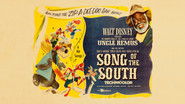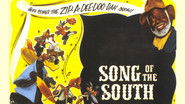Vimacone
Disney's Song of the South has long been a problematic film because of its portrayal of African Americans in the post-Civil War American South. Hollywood films at this time still used clichés of ethnic minorities, even though things were starting to change. One must take that into consideration when viewing this film. In actuality, this film is progressive in terms of race relations. The black characters are still subservient, but only to the elderly plantation owner. Uncle Remus takes on the role of a mentor to the young Johnny, whose father is absent. He is also shown scolding the two troublesome white children, who act as the villains of the picture. The fact that Disney had African American actors to voice the animated characters, despite stereotyped dialect, is commendable for that time period.I believe another factor as to why Disney hasn't made this film available, is to avoid exposing children to the ethnic clichés that are no longer acceptable in today's society. Unlike "Gone With The Wind", which also has controversial depictions of African Americans, the audience for Song of the South was the entire family, which includes children. Although, in the 2000's, Disney did make available all of their cartoon shorts to collectors, which included controversial material, but with contextual introductions. Fans at the time said that that was the best way to put out the film, but Disney declined. In my opinion, all films from this era should be made available, at least for film buffs and historians to view and study.Race controversy aside, the film isn't particularly very engaging nor interesting as some of the other Disney films are. The only parts worth watching multiple times are the animated segments. The combination of live action and animation was perfected in this film and is very believable. The character animation is top notch; Among the best animation of the 1940's. Like "Who Framed Roger Rabbit" 40 years later, this film nicely conveys the notion of a cartoon world tucked away within our own world and that's what the film's greatest strength. Most Disney fans know already that this film has never been released on any video format in the United States because of the controversy. Although it was officially released in other countries in the 80's and 90's, likely because the controversy doesn't extend to other cultures. The only legal way to see this film has been to import a VHS or laserdisc from Asia or Europe. Ironically, lots of production art has been published in various Disney art books over the years and merchandise of the characters is still produced. Even more ironic is that one of the biggest attractions at Disneyland, Splash Mountain, is based on this film.Hopefully the day will come when Disney makes some provision for this film to become accessible.
Rainey Dawn
This is a very good movie. In all honesty I think that if James Baskett (Uncle Remus) felt in any way this movie was racist then he would have never accepted the role (just my opinion). And he was so wonderful as the story-teller Uncle Remus! Uncle Remus is really is a wholesome character, with good morals and a wonderful teacher.Segregation was alive and well during the time of this film - and what is so good about the film - it shows how people of different races and backgrounds can come together. There *might be* an underlying and deeper message to this film - we can desegregate ourselves and live in peace with one another.On a lighter note - there is a fun yet meaningful cartoon withing the live-action picture. Plus this film contains one of Disney's most popular and famous songs 'Zip-A-Dee-Doo-Dah" 8/10
kgprophet
I believe it has been about 30 years since I've seen this film. One may think this banned Disney feature with only some portions of it animated would have a cult status. The ban is by Disney itself, and it is not a cult film because on it's own it is just another nice children's film. Watching for the first time as a grown adult, I could identify the signature weepy music and somewhat adult undertones. The animation was fine, the rabbit reminded me of the rabbit in Winnie the Pooh.The happy tone is what you expect for a children's film, offset by upsets, such as a Mother denying a child's wish to have a puppy. But the absence of this film in recent memory left a hole in my childhood recollections. Having been able to view a great transfer recently, I could appreciate the innovative mix of live action and animation (for only half of the running time). The effect looked very clean for the time period, and this digital copy made all the live characters very vivid.The character Uncle Remus won the actor an Academy Award, portraying a gentle and caring man, who becomes a surrogate father while the boy is staying at a southern plantation. That warm feeling is part of what the Disney 'magic' was all about back then. Ultimately, this film is geared for too young of an audience to be as solid of a classic as their many more popular films. But it has a right to be a part of our memories, and banning the film dishonors the performances and the art of this classic.









